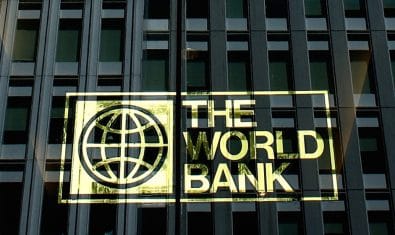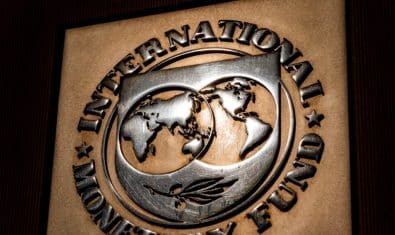The implementation of nearly all subprojects of Pakistan-Power Transmission Enhancement Investment Program Tranche 2 were delayed by an average of about 2.5 years, resulting in delaying the economic and financial benefits from the investment. This has been stated in “Validation Report, prepared by the Independent Evaluation Department (IED) of Asian Development Bank.
Overall, the project had been rated as successful in the project completion report (PCR) and this validation holds the same assessment.
The PCR rated the performance of the executing agency to be satisfactory and that of the borrower as partly satisfactory.
ADB is expected to continue supporting power transmission capacity enhancement in Pakistan and other developing member countries. Therefore, this validation also recommends developing suitable guidelines to capture the economic benefit from the installation of high voltage networks and reactive power devices (e.g., VAR), maintained the report.
The Government of Pakistan prepared the Medium-Term Development Framework (2005–2010) with a projected annual growth rate of 8% and a commensurate addition of power generation, transmission, and distribution capacities. At the time of appraisal, about 45% of the population lacked access to grid electricity, which meant that their potential for economic and social growth was lower than the rest of the population.
When the Multitranche Financing Facility (MFF) Transmission Enhancement Investment Program was being prepared in 2006, the transmission system already faced capacity constraints; the peak transmission system demand in the summer months of 2006 was 13,051 megawatts (MW) with an unsatisfied demand (requiring load shedding) estimated at 800 MW (6%).
NTDC’s investment requirement for overcoming existing capacity constraints and evacuating the proposed new generation capacity was estimated at $3.9 billion during the 10-year period between fiscal year 2007-2016.
Based on a framework financing agreement with the government, ADB approved an MFF not exceeding $800 million on 13 December 2006 (20.0% of NTDC’s estimated investment requirement).
The high priority subprojects to overcome existing constraints were included in the first tranche for $226.0 million (Loan 2289 from ordinary capital resources). An investment program support component worth $10.0 million (Loan 2290 from ADB’s Asian Development Fund or ADF) was also included in the first tranche, which remained open for the full duration of MFF implementation.
The second of four tranches under the MFF transmission program was approved on 17 December 2007. It comprised the installation of 500-kilovolt (kV) and 220-kV transformers with an aggregate capacity of 5,300 megavolt ampere (MVA) at seven locations across Pakistan (of which six were new substations), spare two single-phase 500-kV transformer limbs of 400 MVA total capacity, five transmission lines totaling 242 kilometers (km), and one static volt-ampere reactive (VAR) compensator at Quetta.
The subprojects of the second tranche, like those implemented under the first tranche, continued to address bottlenecks in the 500-kV and 220-kV power transmission systems. The expected impact of tranche 2 was a reliable and quality power supplied and coverage extended, and the indicators were (i) full compliance with grid code and transmission license (2009), (ii) increase by 10.5 gigawatt-hour in annual energy supplied through the transmission system (2011), (iii) outages reduced by 30% (2011); and (iv) grid-connected consumers increased to 70% of the population (2011). These are the same indicators and targets of the outcome envisaged under the MFF program and the PCR evaluation was based on these.
It is noted that the updated project administration manual includes a revised design and monitoring framework (DMF) dated August 2015 that is much simpler. There is no explanation regarding the need, approval, or use of the revision. This validation, like the PCR, has disregarded the 2015 version of the DMF, as it is not clear if it was approved and applied.
The tranche 2 outcomes were primary transmission systems rehabilitated, augmented and expanded–system bottlenecks removed; it mentioned two indicators; i.e., complete restructuring and financial autonomy for NTDC by 2009, and adequate management information system implemented by 2009. These indicators were listed for the second output (namely, NTDC becomes a true commercial entity) for the MFF and required to be completed by 2007.
The PCR flagged the issue of inconsistency between tranche 2 outputs and outcomes and a lack of measurable indicators for the stated outcome.
Project output was power transmission system capacity enhancement through system expansion and augmentation, and electricity from new power stations evacuated. The indicator was completion of the subprojects according to the schedule indicated in the investment and expansion plan.
The actual project cost for the subprojects under the second tranche was $178 million, or 66% the estimated budget of $276 million at appraisal. There was no change in project scope apart from the change of location of the static VAR compensator from Quetta to New Kot Lakhpat.
According to the PCR, two factors contributed to the large difference in project cost: (i) supplies were mostly sourced from low-cost suppliers in developing countries and where costs for commonly used transmission equipment were lower; and (ii) the bids were very competitive as procurement followed the 2008 global financial crisis that depressed demand and lowered commodity prices.
The loan for the second tranche was approved on 17 December 2007, signed on 20 May 2008, and made effective on 19 June 2008. The government needed additional time to meet the condition regarding corporate governance, i.e., making required appointments to the boards of the government-owned companies in the power sector. The original loan closing date was 31 December 2013; the project was extended three times and it closed on 22 August 2016, mostly for allowing the installation of the static VAR compensator. Due to the reduced costs, the loan for the second tranche was reduced by $63 million.
The government relented the loan proceeds to NTDC in local currency to implement the subprojects under the second tranche at a fixed interest rate of 17% with a term of 17 years, including a 2-year grace period. The government assumed the foreign exchange risk.
The PCR affirmed the relevance of the second tranche. The intended outcome was rehabilitation, augmentation, and expansion of the power grid to avoid bottlenecks. This was fully aligned with the government’s development strategy and ADB’s country and energy sector strategies.


























